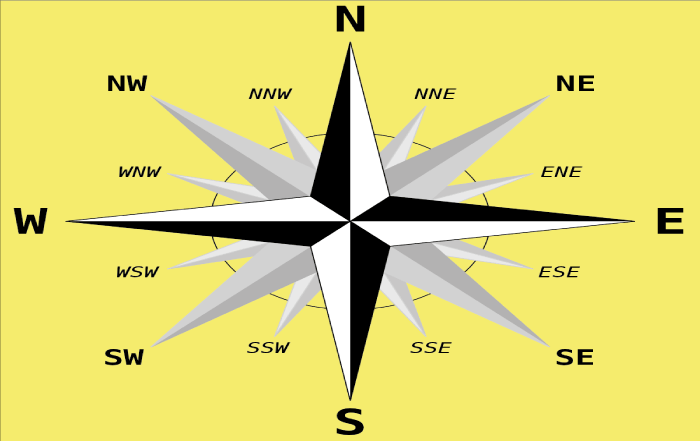Direction DefinitionIntroduction: Explaining the Importance of Understanding DirectionUnderstanding direction is a fundamental concept that is essential to our daily lives. Direction helps us navigate and orient ourselves in a new environment, find our way through unfamiliar terrain, and make sense of the world around us. It refers to how something points or faces and is crucial for our ability to function and thrive. 
For example, understanding the cardinal directions of north, south, east, and west is vital for navigation. When we have a sense of direction, we can use maps, compasses, and other tools to find our way and reach our destination. Similarly, architects and builders rely on the direction to ensure that buildings are properly aligned and positioned with the surrounding environment. Without a clear understanding of direction, we may become disoriented, lost, or unable to make informed decisions. In short, the direction is a fundamental concept that underpins many aspects of our lives, and we must have a basic understanding of it to navigate and thrive in the world around us. What is the Direction? Defining Direction and its Role in Navigation and OrientationDirection is a fundamental concept that is vital in our daily lives. At its core, direction refers to the orientation or alignment of an object or individual concerning the surrounding space. This simple concept is of utmost importance, as it forms the basis for navigation and orientation. For humans, the ability to understand direction is innate. From a young age, we develop a sense of direction through our senses and experiences. We learn to differentiate between left and right, and as we grow older, we start to understand the cardinal directions of north, south, east, and west. This innate sense of direction allows us to navigate our surroundings and make informed decisions. 
In the field of navigation, the direction is a crucial element. We can determine our location and navigate to our desired destination using maps, compasses, and other tools. The direction also plays a significant role in orientation, helping us understand our position and relationship to the surrounding space. In our daily lives, understanding direction is essential for various tasks, such as driving, hiking, and traveling. By having a clear sense of direction, we can reach our destination efficiently and safely. Additionally, the direction is crucial in construction and architecture, where builders rely on it to ensure buildings are properly aligned and positioned. Direction is a simple yet fundamental concept that plays a significant role in our daily lives. By understanding direction, we can navigate our surroundings, make informed decisions, and thrive in the world. Types of Direction: Absolute vs. Relative Direction and Their DifferencesDirection can be classified into two main types: absolute and relative direction. Both direction types are essential in navigation and orientation, and understanding their differences is crucial for accurate positioning and effective communication. Absolute direction refers to the fixed or constant orientation of an object or individual concerning the cardinal directions of north, south, east, and west. The earth's magnetic field determines these directions and is consistent regardless of one's position or location. Absolute direction is useful for determining one's position concerning the surrounding environment and communicating with others. Relative direction, on the other hand, refers to the orientation of an object or individual concerning another object or individual. It is a directional relationship dependent on the observer's position and can change depending on one's point of view. For example, the relative direction of "left" and "right" depends on the observer's position and can change depending on their orientation. The difference between absolute and relative direction is that absolute direction is fixed and constant, while relative direction depends on the observer's position and perspective. Absolute direction is essential for accurate positioning and communication, while relative direction is useful for describing the orientation of objects or individuals to each other. Understanding the differences between absolute and relative direction is crucial for accurate positioning and effective communication in navigation and orientation. Both direction types are essential for understanding our position and relationship to the surrounding environment. By mastering them, we can navigate the world around us with greater confidence and accuracy. Techniques for determining Direction: Using Compasses, Maps, Stars, and other ToolsThere are various techniques for determining direction; each method relies on different tools and resources. The most common techniques for determining direction include compasses, maps, stars, and other tools. A compass is a tool that uses the earth's magnetic field to determine direction. It consists of a magnetic needle aligning with the earth's magnetic field and pointing towards the magnetic north. Using a compass, one can determine the cardinal directions of north, south, east, and west and navigate accurately. Maps are another useful tool for determining direction. Maps typically include a compass rose that indicates the cardinal directions, allowing users to orient themselves and navigate to their destination. Maps also include landmarks and other reference points to help users determine their position and direction. In addition to compasses and maps, stars can also be used to determine direction. By observing the position of stars in the night sky, one can determine the direction of the north and navigate with greater accuracy. Certain stars, such as the North Star or Polaris, are particularly useful for navigation as they remain fixed in the sky and can be used as a reference point. Other tools, such as the sun, can also determine direction. Observing the sun's position in the sky can determine the cardinal directions and navigate more accurately. This technique is particularly useful during the day when the sun's position can be easily observed. Various techniques for determining direction, each of which relies on different tools and resources. Using compasses, maps, stars, and other tools, we can navigate accurately and confidently and reach our desired destination with greater ease. Factors that affect Direction: Environmental and External FactorsDirection is not always constant and can be influenced by environmental and external factors. Understanding these factors is essential for accurate navigation and orientation in different situations. Some of the environmental and external factors that can affect direction include:
Environmental and external factors can affect direction and navigation in various ways. By understanding these factors, we can take steps to mitigate their effects and navigate with greater accuracy and confidence. Importance of Direction in Different Fields: Examples of How Direction is Crucial in Various DomainsDirection plays a crucial role in various fields, and accurate navigation and orientation are essential for success in these domains. Here are some examples of how direction is important in different fields:
Direction is crucial in various fields, and accurate navigation and orientation are essential for success in these domains. By understanding the importance of direction and using the right tools and techniques, individuals in different fields can navigate confidently and achieve their goals more easily. Conclusion: Summarizing the key points and Emphasizing the Significance of DirectionDirection is a fundamental concept crucial in various fields, including aviation, marine navigation, military operations, surveying, outdoor recreation, and agriculture. Accurate navigation and orientation are essential for success in these domains. Understanding the different direction types, techniques for determining direction, and factors that affect direction is essential for achieving this accuracy. We have seen that direction can be absolute or relative and that tools such as compasses, maps, stars, and other instruments can be used to determine direction. However, environmental and external factors such as magnetic fields, topography, weather conditions, human error, electromagnetic interference, and sun and moon positions can affect the accuracy of direction and navigation. The significance of direction cannot be overstated, and its role in navigation and orientation is critical. By understanding the different aspects of direction and taking the necessary steps to mitigate the factors that affect it, individuals in different fields can navigate confidently and achieve their goals more easily.
Next TopicDream Definition
|
 For Videos Join Our Youtube Channel: Join Now
For Videos Join Our Youtube Channel: Join Now
Feedback
- Send your Feedback to [email protected]
Help Others, Please Share










